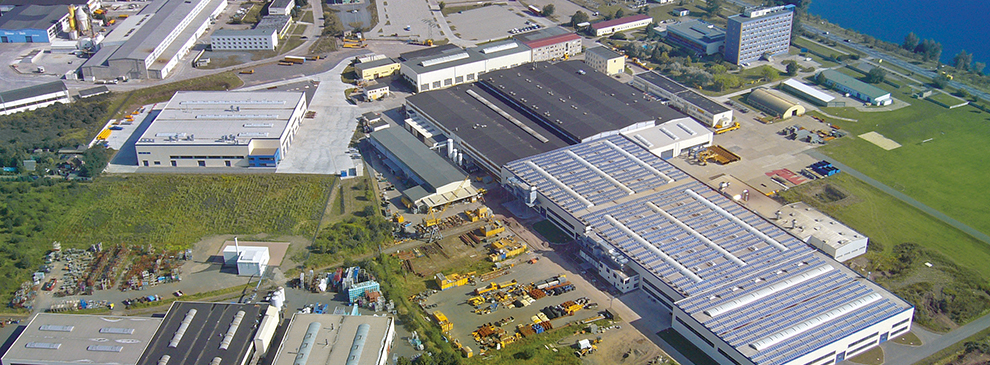Maintenance
Installation of new, frontal steel guide rails for the manriding facility of the Bartensleben shaft in Morsleben
The Bartensleben shaft is the main manriding shaft of the Repository for Radioactive Waste in Morsleben (ERAM). For this repository, the nuclear law plan-approval procedure for decommissioning and safekeeping is currently underway. At least another 25 years will be needed until the completion of the planned complete dismantling, also under the point of view of the current discussion on the retrievability or salvageability of radioactive waste stored in repositories. For this period of decommissioning, the mining infrastructure must be kept operational. Safekeeping is to be achieved by almost complete filling of all cavities with salt concrete and sealing off the accesses to the emplacement chambers and floors by dam structures. A gradual retreat from the bottom to the top is planned, in which the manriding facility and all shaft installations are dismantled section by section as the floors are being dumped. The 4-rope Koepe machine installed in the headframe around 1970 with counterweight, bottom rope and deflection pulleys at the shaft bottom was not suitable for gradual dismantling while the shaft was still in operation. In addition, hairline cracks had formed in the machine's brake disc due to material fatigue, which made it impossible to continue operating the machine for the required 25 years. For these two reasons the manriding facility in Bartensleben shaft had to be rebuilt and equipped with a new trommel mine hoist. In the course of this structural alteration works, the previous wooden guide rails were also removed and replaced by new steel guide rails. The existing bracket spacing of 4 m was no longer permissible for wooden guide rails (according to TAS "Technical requirements for shafts and inclined conveyors", the maximum distance is 3 m), so that they had to be replaced by steel guide rails. The order to Schachtbau Nordhausen to replace the guide rails was a complete service that included the planning, the preparation of the construction documentation including test instructions, the dismantling of the old guide rails, the delivery and assembly of the new steel shaft guides including commissioning and the preparation of the final documentation. The work was carried out while the mine was in operation. The remodeling of the shaft hoisting system includes not only the change of the guide rails from wood to steel and the associated renewal of the corresponding brackets, but also the adaptation of the hoisting cage, the renewal of the guiding devices in the shaft bottom frame belonging to the respective floor with partly existing swinging platforms and the adaptation of the guide frame. As preparatory work, it was also necessary to replace an existing API shaft down pipe in order to achieve the necessary site clearance. The segments of the two 520 m long guide rails strings were manufactured in-house, with manufacturing tolerances of ± 2 mm for an 8 m long guide rail. For installation in the shaft, maximum permissible installation tolerances of ± 5 mm had to be guaranteed.
How to find us
SCHACHTBAU NORDHAUSEN GmbH
Industrieweg 2a
99734 Nordhausen
Telephone: +49 3631 632-0
Fax: +49 3631 632-334
E-Mail: sbn@schachtbau.de
Web: www.schachtbau.de
Copyright © , All Rights Reserved

 German
German







